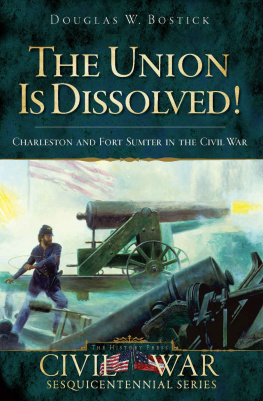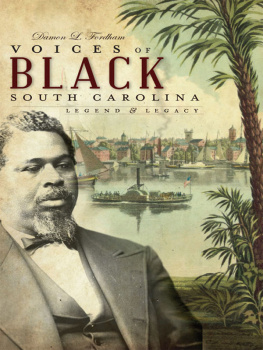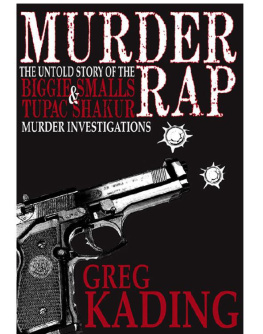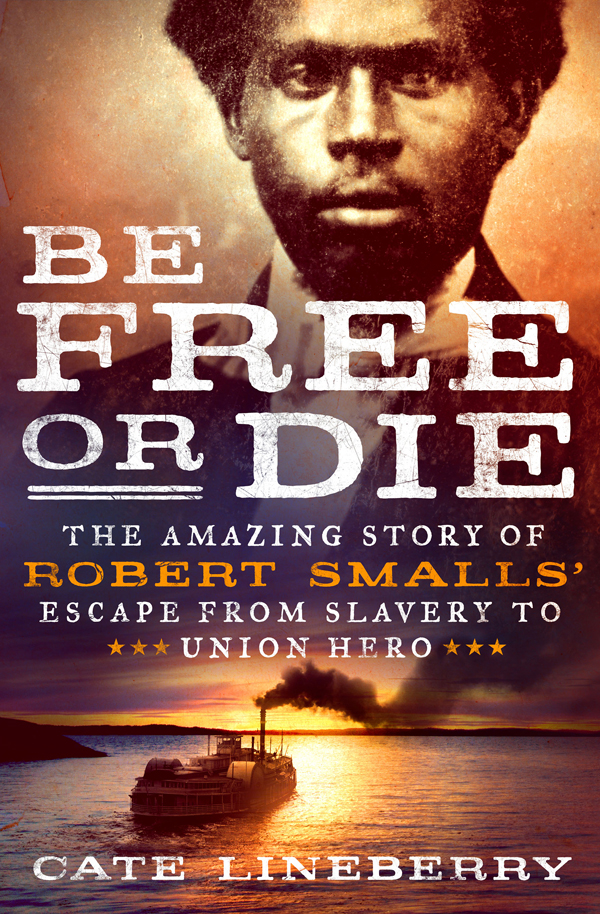Contents
Guide
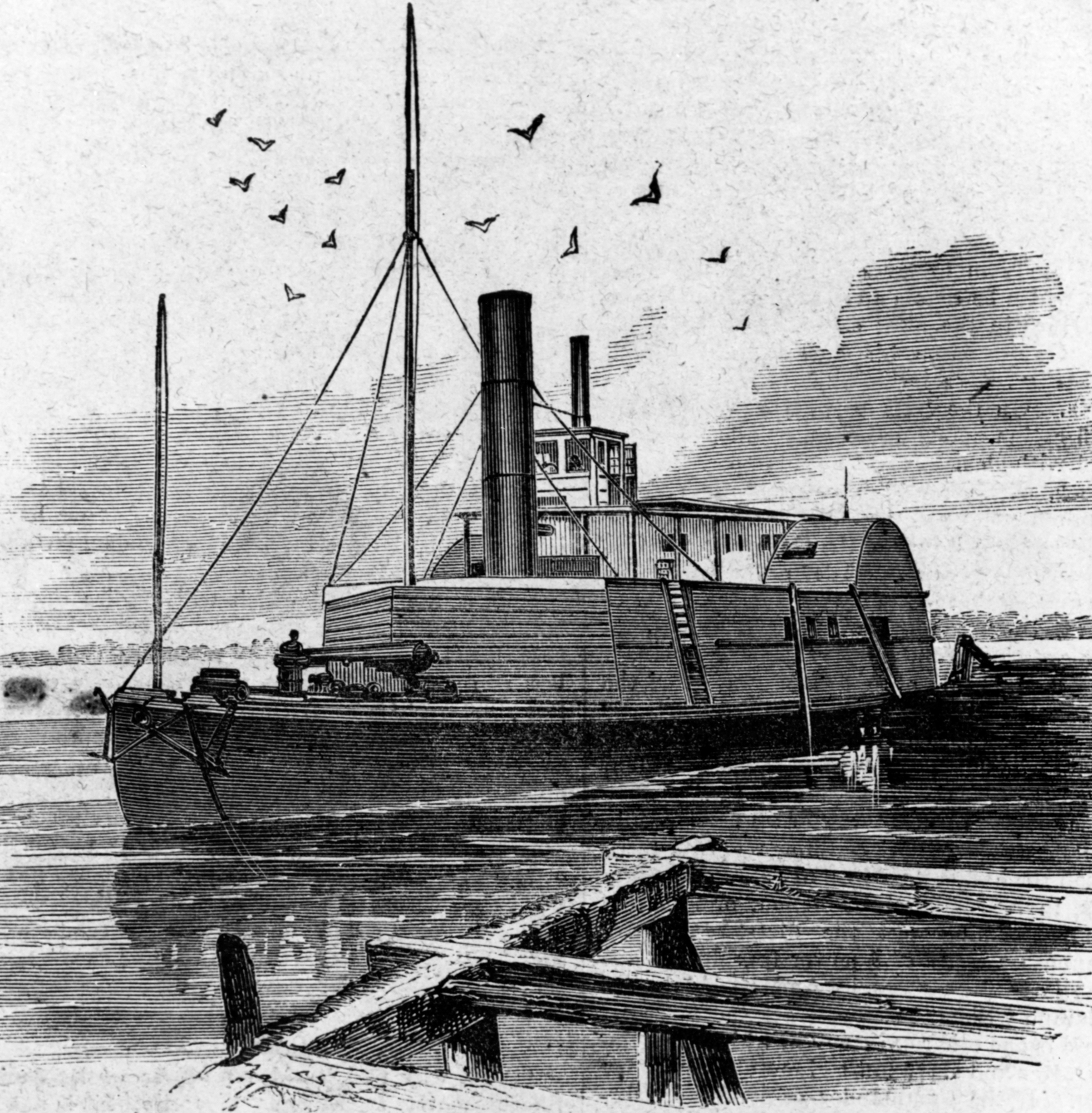
In what was called one of the most daring feats of the Civil War, Robert Smalls seized the Confederate sidewheel steamer, the Planter (above, engraving), in 1862, and turned it over to the Union. U.S. Naval Historical Center

The author and publisher have provided this e-book to you for your personal use only. You may not make this e-book publicly available in any way. Copyright infringement is against the law. If you believe the copy of this e-book you are reading infringes on the authors copyright, please notify the publisher at: us.macmillanusa.com/piracy.
For Tim and my parents
Although born a slave I always felt that I was a man and ought to be free, and I would be free or die.
R OBERT S MALLS

The Planters Confederate officers:
Samuel Smith Hancock, first mate
Samuel Z. Pitcher , engineer
Charles Relyea , captain
* * *
Those who escaped aboard the Planter on May 13, 1862:
Abram Allston worked as a boatman at nearby Fort Moultrie and served as the wheelman during the escape.
Samuel Chisholm is thought to have worked on the steamer Etiwan , which hid members of the party before the escape.
Alfred Gourdine was a regular member of the crew and served as an engineer.
Abraham Jackson was a regular member of the crew and served as a deckhand.
William Morrison was a tinsmith and plumber by trade and served as a deckhand during the escape.
John Small was a regular member of the crew and served as an engineer. His wife and daughter were hidden aboard the Planter during the escape.
Robert Smalls, a regular member of the crew, masterminded the escape and served as the captain that morning. Also aboard were his wife, Hannah ; his daughter, Elizabeth ; his infant son, Robert, Jr. ; and his stepdaughter, Clara .
Gabriel Turner was a regular member of the crew and served as a deckhand.
Anna White and Lavinia Wilson were likely girlfriends, relatives, or friends of others aboard the Planter .
* * *
Confederate Military and Political Figures:
President Jefferson Davis was inaugurated for a six-year term on February 22, 1862, after serving as the Confederacys provisional president.
John Ferguson was the owner of the Planter and leased the steamer to the Confederacy.
Gen. Robert E. Lee served as a military advisor to Davis until June 1862 when he replaced wounded Army of Northern Virginia commander Joseph E. Johnston.
Lt. Henry McKee was the master of Robert Smalls and his mother, Lydia Polite, and served in the 12th South Carolina Militia Regiment.
Maj. Gen. John C. Pemberton was the commander of the Confederate Department of South Carolina and Georgia and in charge of Charlestons defenses. Pemberton replaced Gen. Robert E. Lee, under whom he had served.
Gen. Roswell Ripley was the commander of the Second Military District of Charleston under Pemberton. Ripley used the Planter as a transport and as his own personal dispatch boat for relaying military messages.
* * *
Union Military and Political Figures:
Secretary of the Treasury Salmon P. Chase was responsible for all abandoned Confederate property, which included thousands of formerly enslaved people as well as cotton left behind by whites when they fled the area. A staunch abolitionist, Chase saw the situation at Port Royal as an opportunity to help the former slaves and perhaps advance his political career.
Cmdre. Samuel Francis Du Pont was the commander of the South Atlantic Blockade and was responsible for Union naval forces during the attack on Port Royal Sound in November 1861. After Smalls escaped from Charleston, Du Pont hired Smalls as a civilian boat pilot working for the Union. Du Pont was promoted to rear admiral in July 1862.
Rev. Mansfield French , a Methodist minister, was sent to Port Royal by the New Yorkbased American Missionary Association to see what could be done to help the former slaves. French convinced Du Pont to let Smalls accompany him to the North in 1862 to help him raise funds for the Port Royal Experiment.
Maj. Gen. David Hunter served twice as the commander of the Department of the South, which included South Carolina, Florida, and Georgia (March 21, 1862September 5, 1862, and January 20, 1863June 12, 1863). Though he was not authorized to do so, Hunter, an abolitionist, declared all enslaved people in Georgia, Florida, and South Carolina free and organized a black regiment in 1862. Lincoln quickly rescinded Hunters proclamation.
Brig. Gen. Rufus Saxton became the military governor of the Department of the South in April 1862 under Hunter, the major general in command. Saxton was responsible for the plantations and the former slaves in the department. A devoted abolitionist, Saxton asked Smalls and French to deliver a letter to Secretary of War Edwin Stanton in August 1862 asking for permission to enlist black soldiers.
Brig. Gen. Thomas W. Sherman was in command of land forces during the attack on Port Royal Sound in November 1861. He was briefly tasked with taking care of the former slaves and the cotton left behind.
Maj. Gen. William Tecumseh Sherman led sixty thousand troops on a three-hundred-mile march from Atlanta to Savannah during his famous March to the Sea in late 1864.
Secretary of War Edwin Stanton authorized Saxton to enlist the first black soldiers in the U.S. Army.
Secretary of the Navy Gideon Welles authorized Rear Adm. Samuel Francis Du Pont to have the Planter appraised and to determine how the prize money should be divided.
O n a mild M ay evening in C harleston, S outh C arolina, in 1862, the second year of the Civil War, vessels in the service of the Confederacy rocked at their moorings in the citys harbor, ready to transport soldiers and supplies to fortifications in and around Charleston the following day. While many crews slept aboard their ships that night, Confederate soldiers patrolled for any signs of activity by Union spies or saboteurs. The soldiers had no clue that an extraordinary and unprecedented event was about to take place: by dawn a twenty-three-year-old illiterate enslaved man named Robert Smalls would seize a 147-foot sidewheel steamer from the headquarters of a Confederate general and run a gauntlet of fortifications to deliver the valuable vessel and its massive guns to nearby Union forces. In doing so, Smalls would win freedom from slavery, not only for himself and his crew but also for his wife and his two young children who were hidden on board.
Smalls act took the Confederates completely by surprise. Few in the Confederacy, or even in the North, would have believed an African American could captain a vessel, let alone pull off such a stunning escape. The news made headlines and challenged much of the countrys view of what blacks could do, while the white establishment of the South was so angry it offered a bounty of at least two thousand dollars for Smalls capture.
While the South hoped for the chance to punish Smalls, Smalls suddenly became one of the most famous African Americans in the country. He was given astonishing opportunities, which he fully embraced. Shortly after his escape, he met with President Abraham Lincoln and members of his cabinet in Washington, D.C., a city where slavery was still legal.



